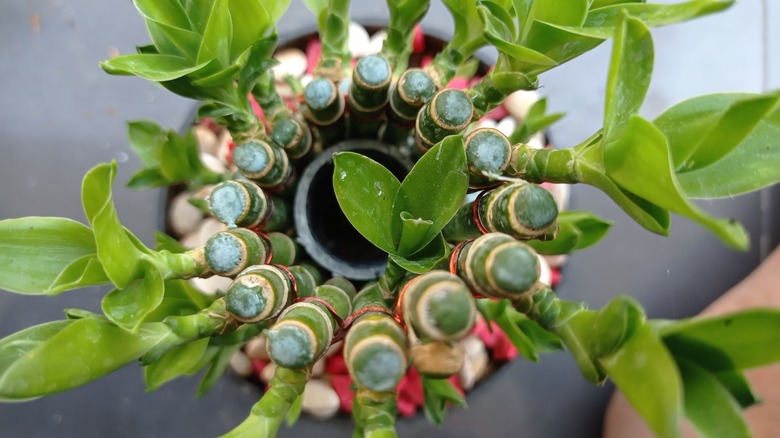How To Get Rid Of Mold On Lucky Bamboo
Mold is a common enemy of house plants and finding it on lucky bamboo (Dracaena sanderiana, zones 9-12) isn't uncommon. Mold can appear on the stalk, leaves and even the vase, and while it likely won't kill your lucky bamboo, it's unhealthy and unsightly. Protect yourself from inhaling the mold or allowing it to contact an open sore by wearing protective gloves and a mask over your mouth and nose when cleaning your lucky bamboo. As lucky bamboo often grows in water, it's affected by the humid conditions. Black spots caused by sooty mold are the result of an aphid infestation that is attractive to ants and can be washed or sprayed off.
Tip
Protect your home's environment and neighboring plants by using home remedies to get rid of mold on your lucky bamboo.
Preventing Mold on Lucky Bamboo
Preventing Mold on Lucky Bamboo
Maintaining a healthy environment for any plant is essential. Lucky bamboo grows in soil or water. When placed in a clear glass container, monitoring the water for clarity is a key indicator of good health. Using distilled water, change the water at least every two to three months or when it starts looking cloudy and drop some bamboo nutrients into the water twice a year. The quantity depends on how many stalks are growing in the vase. Read the instructions on the liquid fertilizer to determine the exact quantity to use.
Check the roots of the bamboo plant by removing it from the water and carefully investigating them for mold. If mold is present, know that it can create a barrier between the nutrients in the water and the root. Clean the roots by gently rinsing them with distilled water and be sure to clean the rocks, if present, and the vase itself. Use sterilized scissors to trim the roots slightly, but no more than one-third of the total root growth.
Remedies for Lucky Bamboo Mold
Remedies for Lucky Bamboo Mold
To remove mold on a lucky bamboo plant, it's necessary to remove the infected leaves and other plant parts. Anecdotal remedies for using baking soda, oil, and soap as a homemade fungicidal spray just aren't supported by research; in fact, they may do more harm than good, particularly since Dracaena species plants are sensitive to soap and can be damaged by its application.
Although commercial fungicides are available to treat mold on plants, they're not recommended for lucky bamboo houseplants. If you're growing lucky bamboo in the landscape, look for a fungicide that's safe to use on Dracaena species plants, and follow all label recommendations for treatment. The best strategy for managing fungal diseases on your lucky bamboo houseplant is keeping an eye on your plants for the initial symptoms and immediately removing infected leaves.
